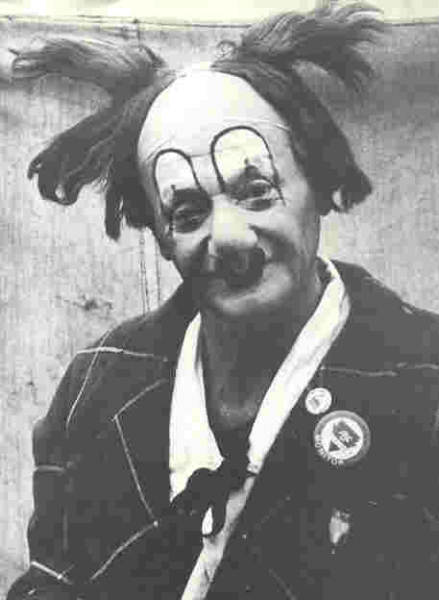Some Known Details About All Occasion Performers
Table of ContentsThe Buzz on All Occasion PerformersAll Occasion Performers Things To Know Before You Get ThisAll Occasion Performers - The Facts6 Simple Techniques For All Occasion PerformersNot known Factual Statements About All Occasion Performers
He specialized in pigs and burros, which he educated and offered to various other clowns. He additionally provided an act with a trained rhinoceros and is the only person in circus background to present a tightrope strolling elephant.He was also a philanthropist that offered kindly to many charities and he put up the initial monument to soldiers eliminated during the Civil Battle - Face painters near me. Origins of the Auguste characterThere is an extensively informed legend about the origins of the Auguste clown. According to the legend, an American acrobat named Tom Belling was doing with a circus in Germany in 1869
The supervisor suddenly entered the space. Belling removed running, winding up in the circus field where he fell over the ringcurb. In his embarrassment and rush to escape, he fell over the ringcurb again on his escape. The target market screamed, "auguste!" which is German for fool. The supervisor regulated that Belling proceed appearing as the Auguste.
All Occasion Performers Fundamentals Explained
For something, words Auguste did not exist in the German language up until after the character came to be popular. One of the concepts of the real origin is that Belling duplicated the character from the R'izhii (Red Haired) clowns he saw when he visited Russia with a circus (https://issuu.com/all0ccperf0rm). Characters like the auguste absolutely existed formerly
:upscale()/2022/02/14/195/n/41541398/d100a3b8501a2a3b_TSDITTT_WB007.jpg)
The dancing later came to be called faucet dance. It should be kept in mind that there are alternate 'beginnings' for the vagrant personality"among which was the taking a trip "hoe children," or travelling ranch employees, who rode the rails from one community to one more, cleaning the residue away from their eyes & mouth.
Not known Incorrect Statements About All Occasion Performers
Keep in mind that the scare wig, overstated lips and eyes, oversized garments and props of the American clown, props such a club soda, stuffed clubs, taking off stogies, and whistles loaded with residue, are not Grimaldi's. They come from Tambo and Bones. The English blackface comedian Charles Mathews came to America in 1822 to perform and researched black life and custom-mades.
Nobody knows where the mummers' plays and Morris dances came from. In such plays there is a mishmash of characters including "kings" and "saints", cross-dressing, and blackface duties; the faces of Morris (or "Moorish") dancers were also smudged. The mummer's plays were except enjoyable. The majority of were performed by paupers in the hungry time after Xmas.
The Derby Play of the Tup was done for food and beer by out of work youths. One such demonstration has entered American history as the Boston Tea Party.
Not known Facts About All Occasion Performers

While not the lush affairs we consider today, some early, rougher types of taking a trip circus were prominent in America from Revolutionary times-- George Washington was a follower. Blackface clowns done in them from at least the 1810s and possibly before; they were a staple by the 1820s. The broad red or white mouth painted on by modern clowns is a residue of the blackface mask.
In lots of respects minstrelsy was born when these entertainers moved their acts from the outdoor tents to the phase of American range cinemas. Absolutely there was a strong aspect of clowning in minstrelsy. The blackface mask was a clown's disguise, exaggerating the facial features into an animation, a caricature. The blackface clown might be the precursor of today's anodyne circus clown, however otherwise the 2 are as contrary as blackface and whiteface.
Some Of All Occasion Performers
Who in nineteenth-century America was more of an Apart from the ? What far better mask than blackface? In many traditions the clown would reveal some physical deformity, like a hunchback, dwarfism-- or like Jim Crow, lameness - Corporate event ideas Dallas. And since he was different, an Others, the clown was allowed to claim and do things no person else could.
Satire and apology were main to minstrelsy. It's intriguing that in the West African cultures where most slaves came, the poet-singer griot served the exact same ridiculing jester feature when the event arose. That may have something to do with the curious (to us, recalling) convenience with which Southern Blacks approved not simply the music however even the demeaning wit of minstrelsy.

Emmett Kelly was the finest recognized tramp clown with his personality "Weary Willie."Tramp clowns are proficient: + jugglers + magicians + pianists + chalk talk musician + bicyclists.
Comments on “The 6-Minute Rule for All Occasion Performers”